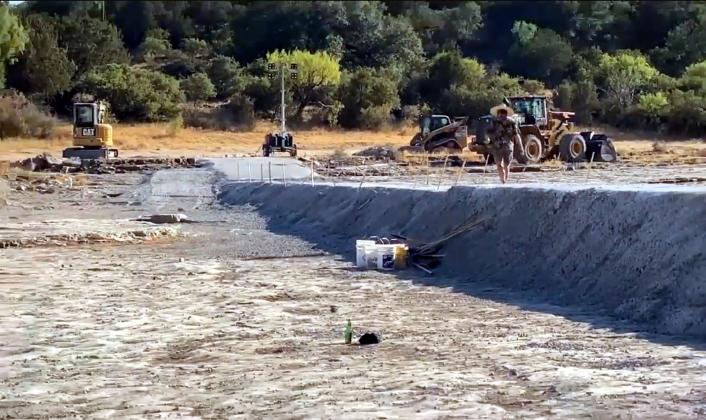Austin City Council weighs in on impoundment activity upstream
The council of a large city and residents in remote area counties have joined forces in pushing back on two planned river impoundment attempts, which could impact the Highland Lakes.
Mason County landowner Scott Zesch and his neighbors launched into action after discovering a concrete structure crossing a section of the James River, which feeds into the Llano River.
Their main concern involves whether the landowner sought permits or needed to seek permits to do so.
Zesch believes so. "The ownership of the stream bed has nothing to do with the public's right of access. The public has the same right of access up to the gradient boundary, even if the stream bed is privately owned," he told The Highlander. "The ownership of the stream bed has nothing to do with the regulation of the surface water.
"The state (public) still owns the surface water which is why the landowner must get a water right from TCEQ," Zesch added. "Of course, parks and wildlife and LCRA still have jurisdiction in the stream even if it's privately owned." The discovery surfaced just as Llano County residents joined Edwards County in a battle against a private landowner, Greg Garland of Waterstone Creek LLC., seeking a permit for a dam on the south Llano River, 20 miles southwest of Junction.
Highland Lakes residents, including members of a group called Save Lake LBJ, have hosted rallying meetings and, just like the Mason County group, reaching out to state agencies to express their concerns. Save Lake LBJ spokesman Fermin Ortiz published a letter in The High - lander excoriating the landowner in the proposed project on the south Llano River. Attempts to reach Garland were unsuccessful.
"Being a Texas rancher takes much more than just buying some dirt. Ranchers need to work with nature, respect nature, and understand and appreciate
River nature,” Ortiz wrote. “True Texas ranchers are there to help their neighbors, not hurt their neighbors.”
Fermin echoed the same sentiment about the James River project in Mason County, during an Aug. 29 Central Texas Water Coalition meeting in Kingsland.
“This is the kind of stuff that people are doing to the detriment of all of us,” Ortiz told the crowd. He lamented the larger impact of “impoundment” potentially interrupting or “blocking" the flow of tributaries feeding into the Highland Lakes and Austin on the way to the coast.
“We’re going to slow this down and try to stop this,” he said.
A partner of the property, Bill Neusch, declined comment through his office, based in Marble Falls.
Now, the issue has awakened a so-called “elephant in the room” – the Austin City Council.
The council is scheduled to consider a resolution at its Sept. 14 meeting. The agenda item, No. 80, reads: “[P]rivate landowners in Texas have historically been prevented by law and custom from impounding navigable rivers for private use without permit from the Texas Commission on Environmental Quality (TCEQ).” The resolution goes on to mention both the Mason County dam and the proposed south Llano River dam project.
If approved, the Austin council has directed city staff to engage both Texas Parks and Wildlife as well as TCEQ in an effort to halt the upstream impoundment activities.
As the south Llano River project awaits permit application assessment, such concerns prompted the agency to take a closer look at what was happening in Mason County on the James River.
“Texas Commission on Environmental Quality (TCEQ) Region 8 San Angelo staff conducted an onsite complaint investigation on Aug. 25, 2023,” TCEQ spokesman Ricky Richter wrote in a statement to The Highlander, regarding the James River impoundment. “TCEQ Region staff are consulting with additional TCEQ agency partners including the Office of Water to evaluate the structure.
“Additionally, TCEQ Region staff are consulting with other applicable agencies including the Texas Parks & Wildlife Department (TPWD) and the U.S. Army Corp of Engineers (Corp of Engineers),” he added. “The structure is being evaluated and the investigation is ongoing.”


